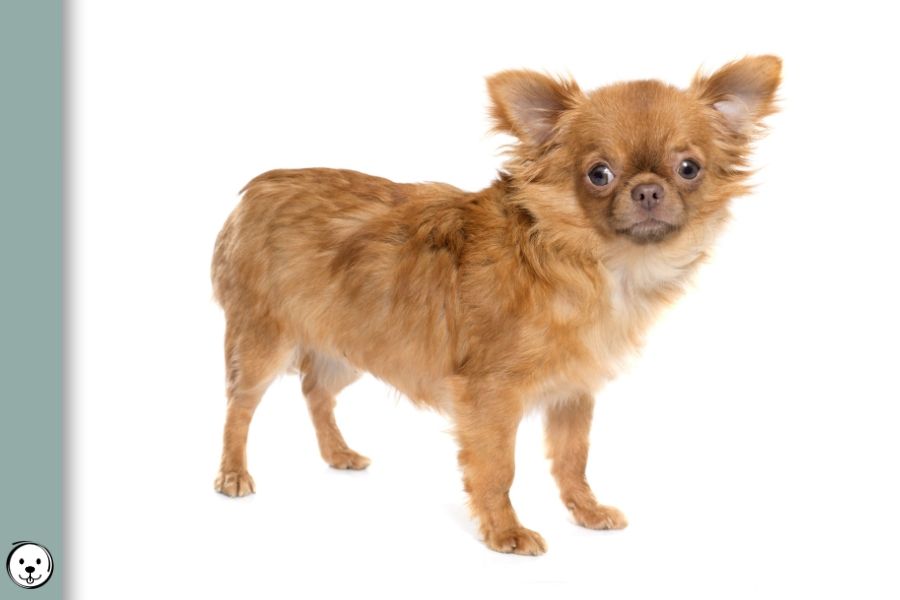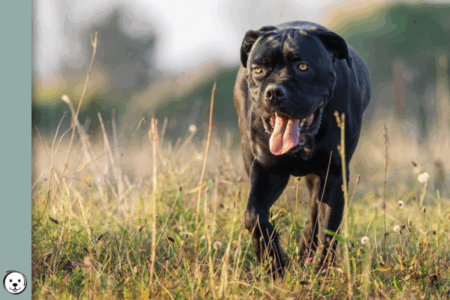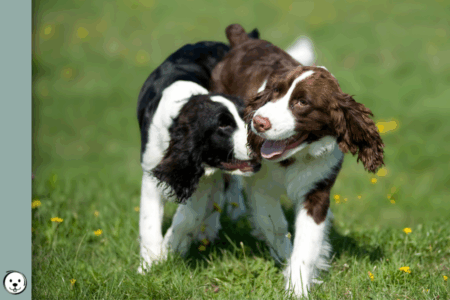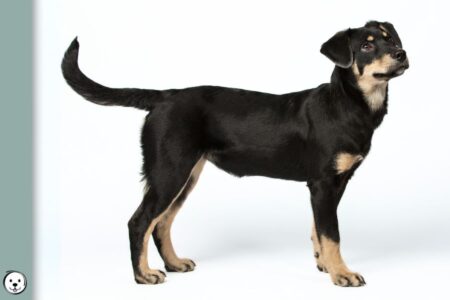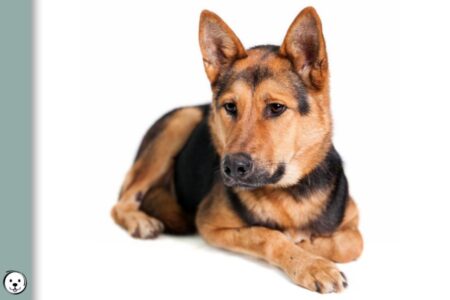Chocolate sable dogs have a sable pattern with brown eumelanin. They have a phaeomelanic base color with varying amounts of brown hair tipping mostly concentrated along their upper body.
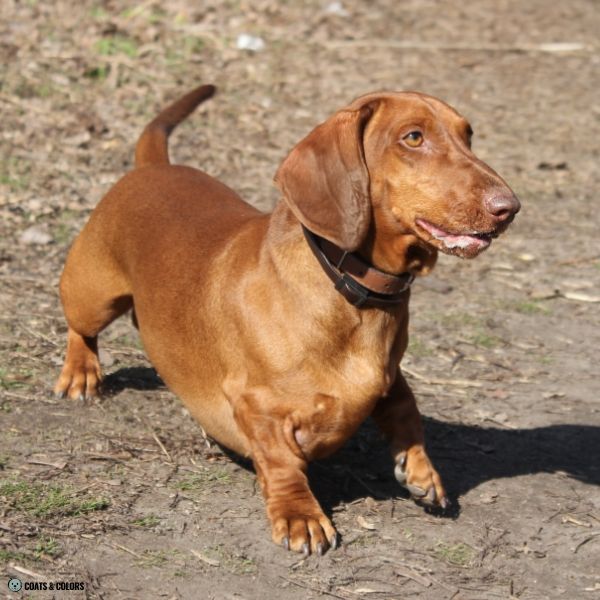
Sable Colors
Dogs need to be able to express their sable allele (we shortened the new allele names ASIPDY and ASIPSY to Ay). They have to be ky/ky combined with either a mask Em/- or a wild type allele E/-.
The color of their eumelanin sabling is determined by the B locus and D locus.
The color of their phaeomelanin is determined by red intensity.
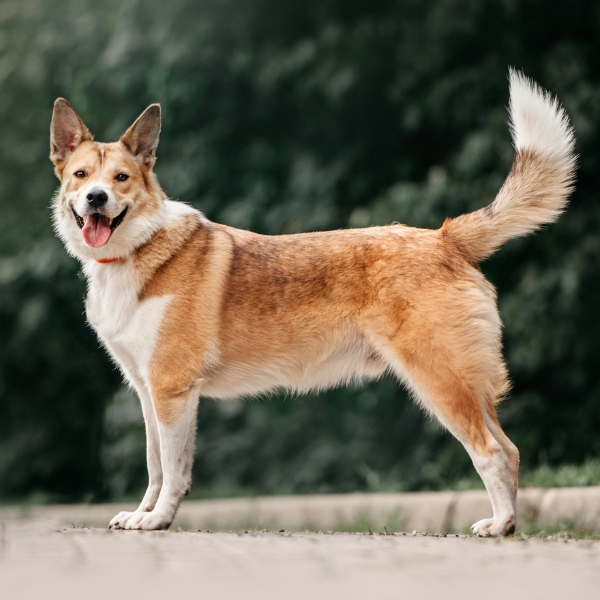
Em/- or E/- ky/ky Ay/- B/- D/-
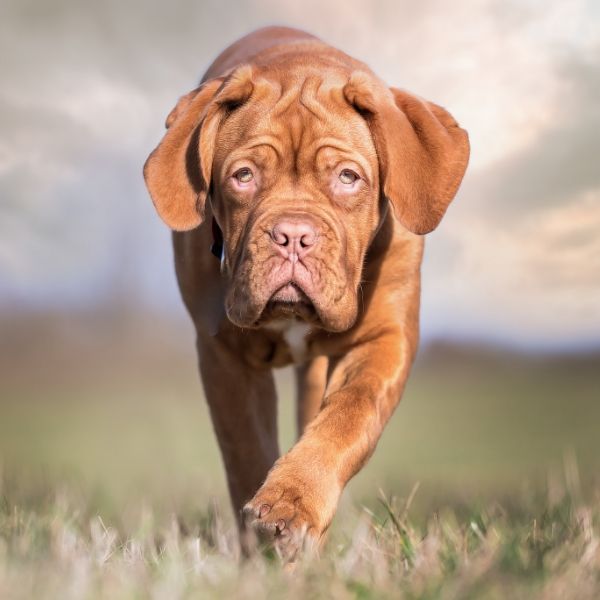
Em/- or E/- ky/ky Ay/- b/b D/-
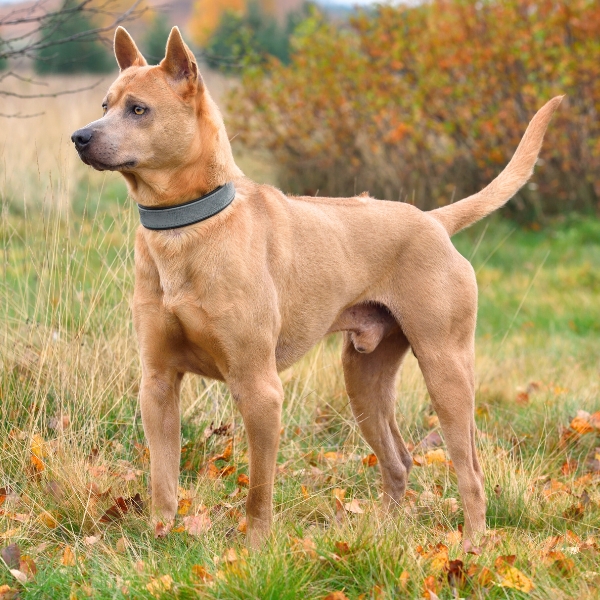
Em/- or E/- ky/ky Ay/- B/- d/d
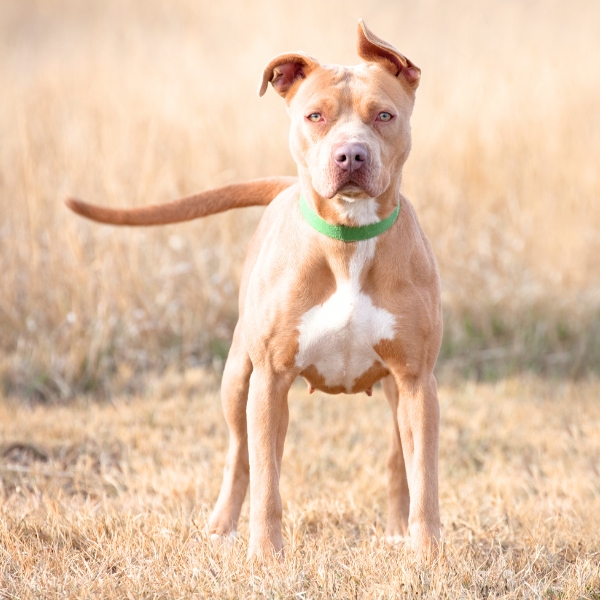
Em/- or E/- ky/ky Ay/- b/b d/d
Brown-Based Sable Pattern
Dogs with a chocolate sable pattern will have a predominantly phaeomelanic coat with varying amounts of brown-tipped hairs on top, causing anything from little to heavy brown shading.

Sable is one of the various A locus patterns that come with both types pigment.
It tells pigment cells where to make phaeomelanin and where to make eumelanin.
If you don’t know what that is, read more about pigment types.
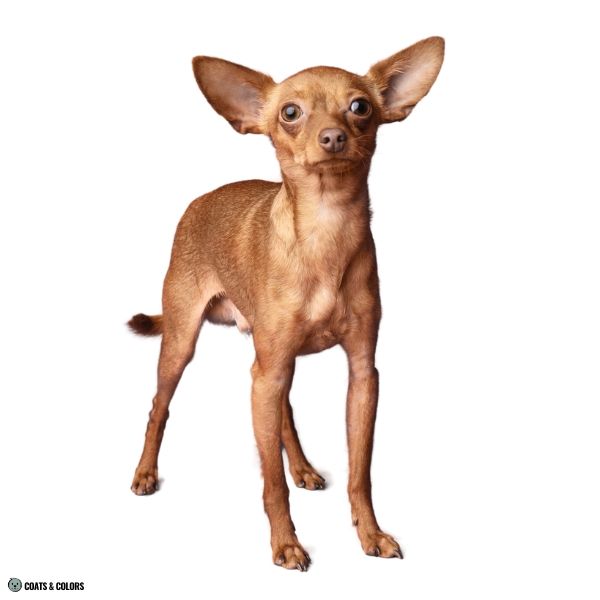
Dogs with a brown-based pattern have chocolate brown eumelanin (b/b D/-).
The only difference to a black-based sable is the modified eumelanin color. All the black pigment on a dog (including hair, nose color, eye rims, etc.) will turn brown if a dog is b/b at the B locus.
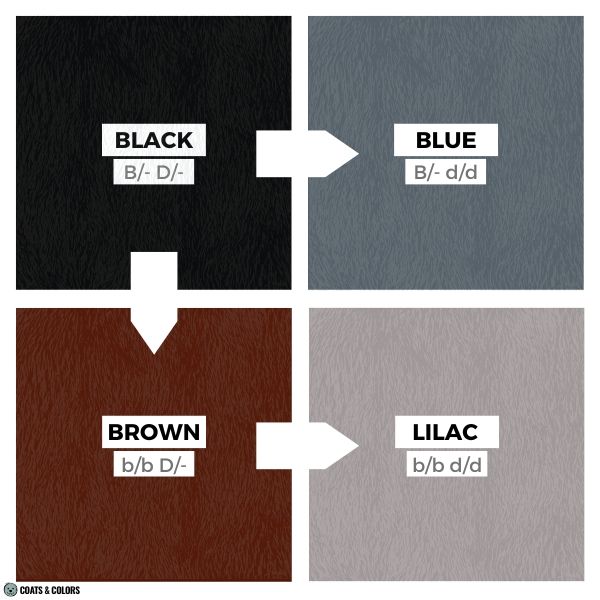
The brown eumelanin also affects their nose, whiskers, eye rims, lips, nails, paw pads, or skin. Brown eumelanin is also called “liver” or “chocolate” or “red“, depending on the breed.
Dogs with brown eumelanin tend to have greenish puppy eyes and amber eyes as adults.
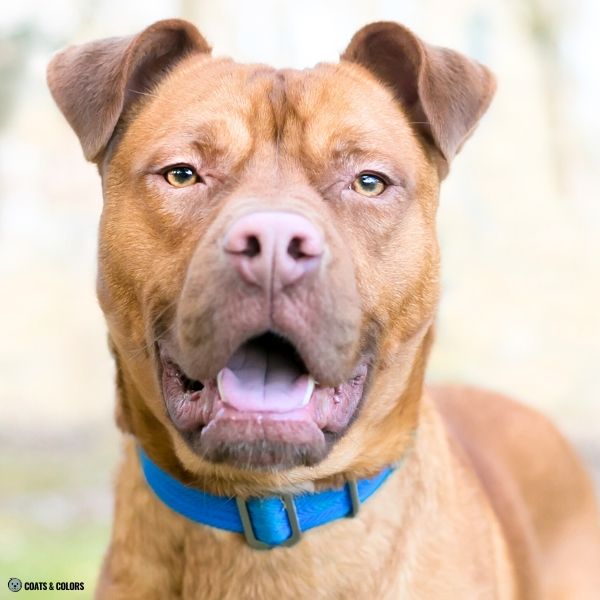
The phaeomelanin intensity can vary from pale cream to deep red.
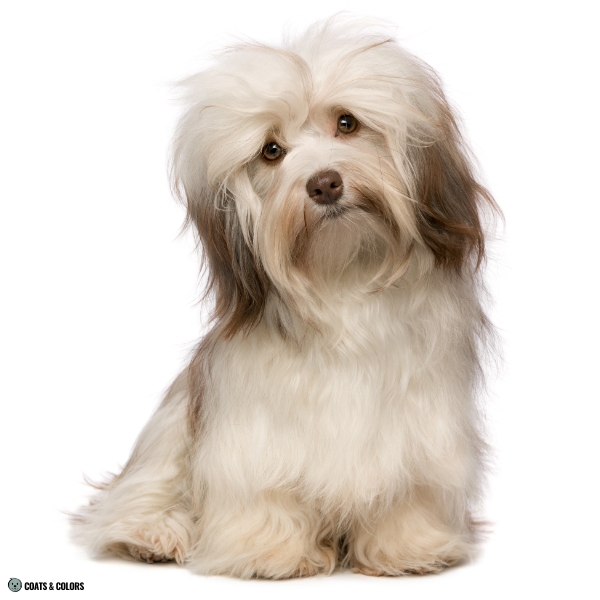

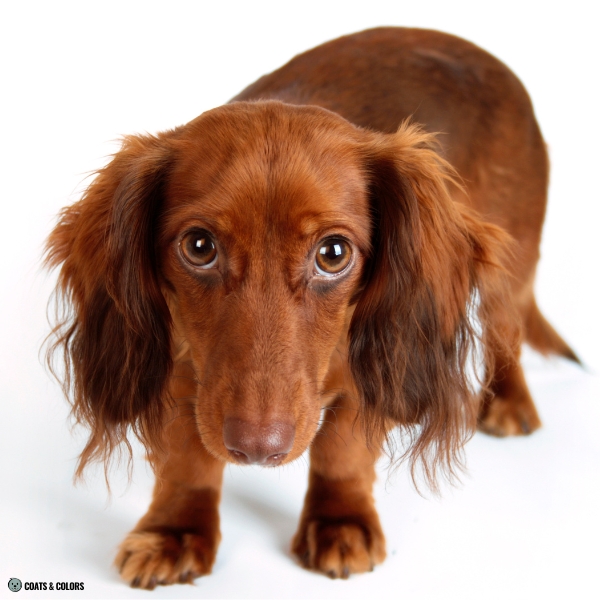
Brown sable shading is mostly concentrated along the dog’s topline.
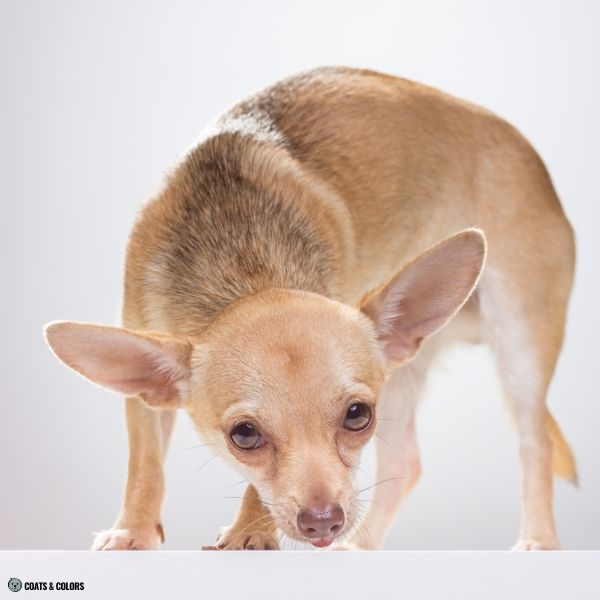
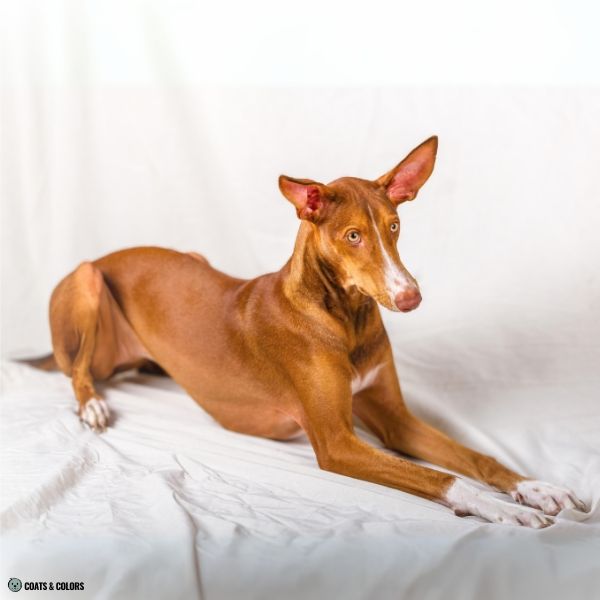
Sabling causes brownish hues on the phaeomelanic base color. Depending on the amount of brown sabling, this can cause a chocolatey cast or a heavy dark brown overlay along the back of the dog.
Also, brown pigment color can be lighter or darker in individual dogs.
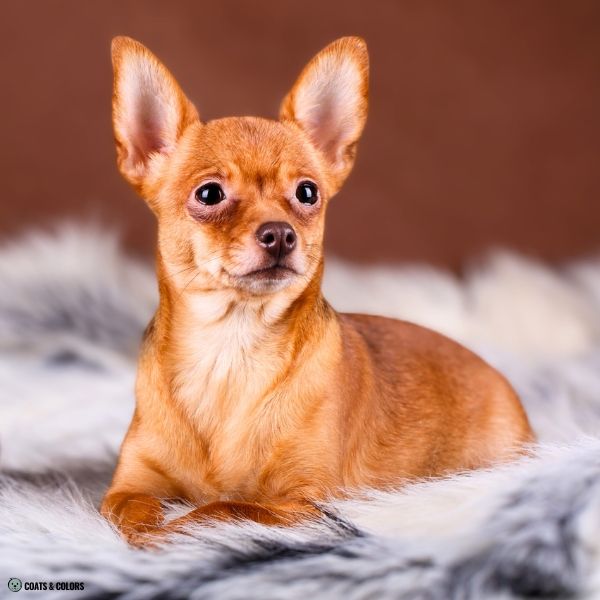
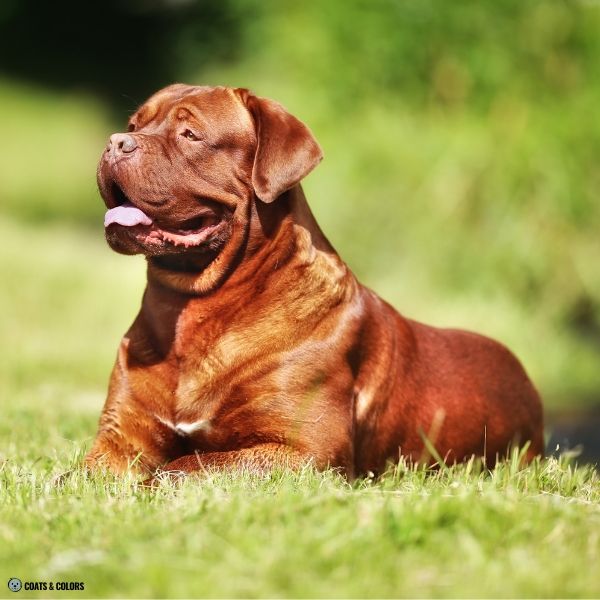
Heavier brown shading can also cause brown ear fringes, form a darker half-collar around the neck, or give a widow’s peak on the sable dog’s forehead. However, brown hair tips can sometimes be virtually invisible due to the very low contrast against an orange or red phaeomelanin background.
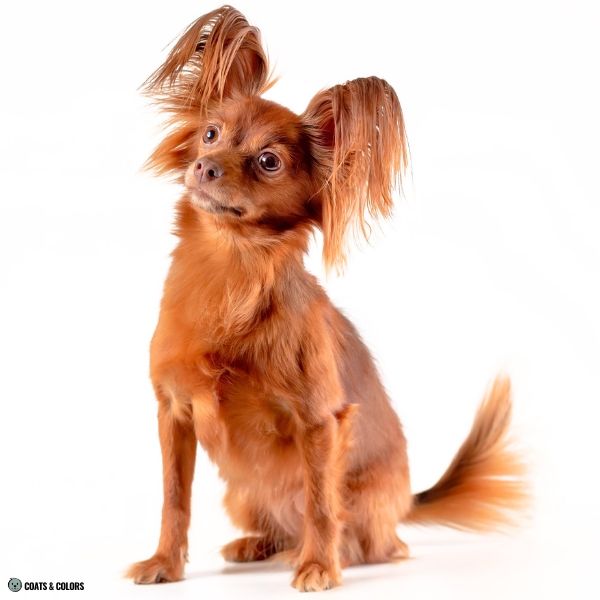
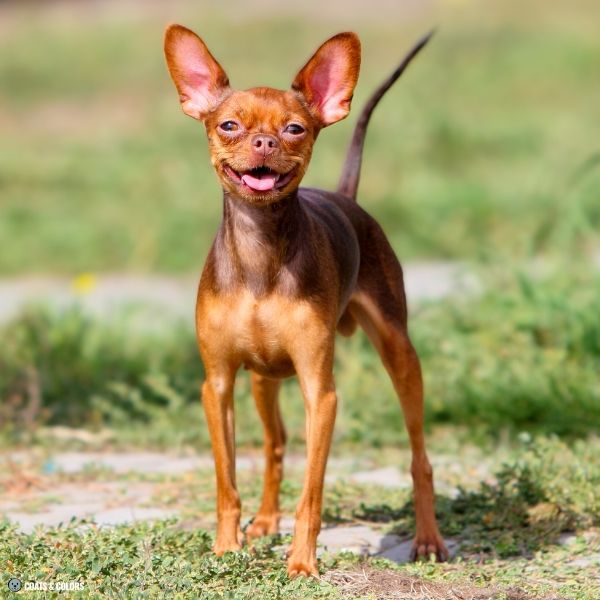
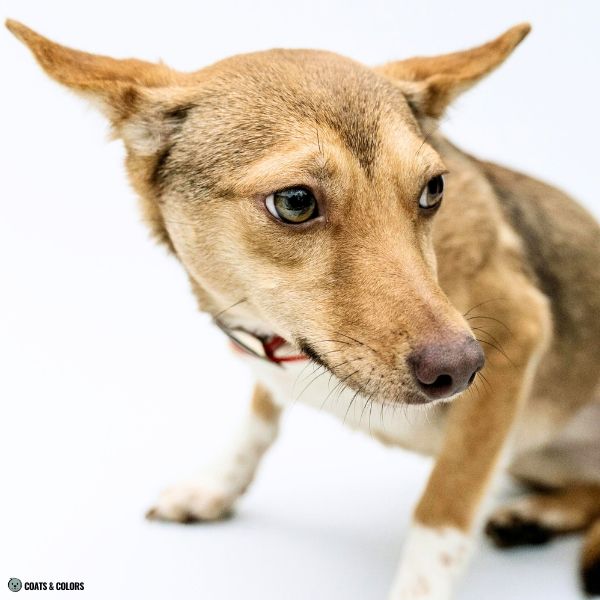

Normal sable should not give any dark face markings below the widow’s peak (which not all sable dogs have anyway). And it should not produce any dark shading down the upper arms and front legs.
But again, the actual placement of brown-tipped hairs can be hard to see in some red coats.
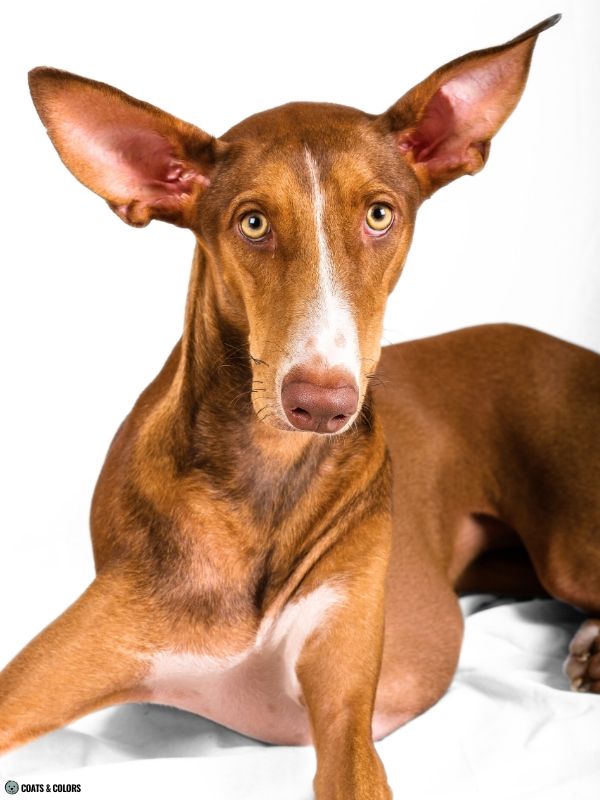
Some brown sable patterns end up very solid phaeomelanic with the eumelanin shading barely visible. In many cases, it can be almost impossible to tell them apart from a brown-based recessive red.
One thing you can look out for: In brown-based recessive red, the whiskers are white, but they will be brown in brown-based sables. Of course, this only works if the dog does not have too much muzzle white, which can turn the whiskers white in any pattern.
And white whiskers will also happen if the dog is a brown-based sable domino!
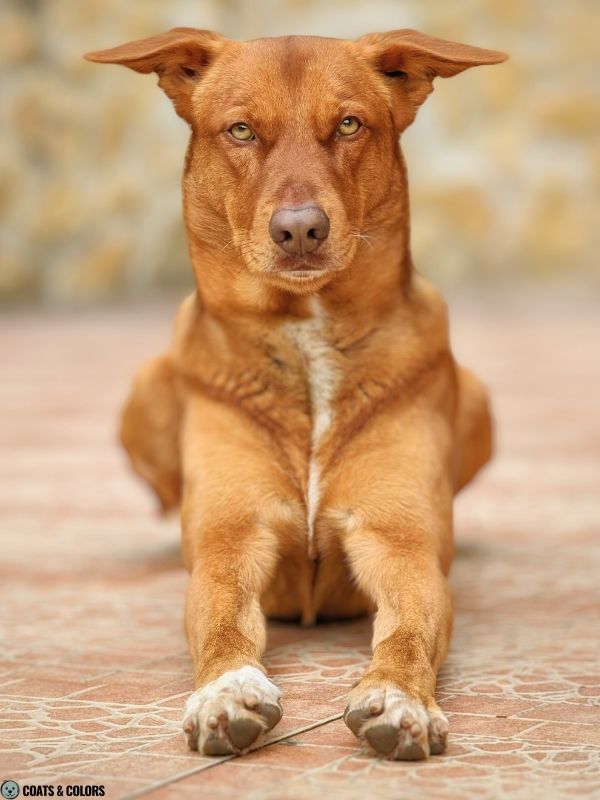
Brown-Based Sable Puppy Coat
Young sable puppies are typically born with lots of shading all over their coat.
When their brown shading recedes and the first patches of clear phaeomelanin appear in their still very dark coat, their markings may even look like they had tan markings for a while.
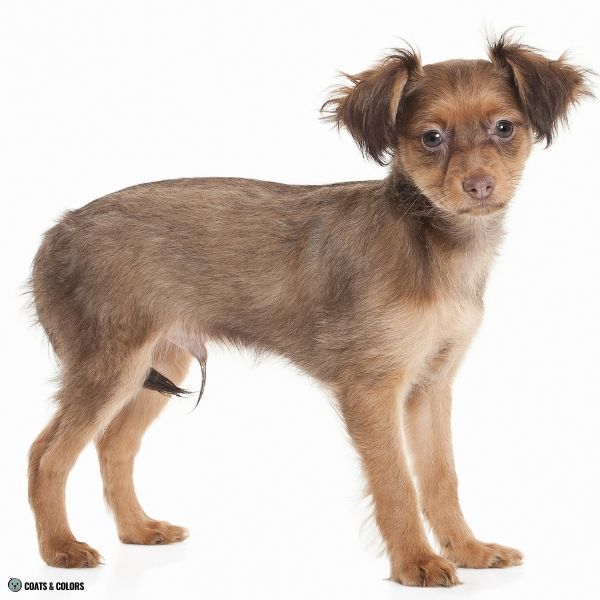
It can take some time for all the brown overlay to clear. The brown hair tips may or may not return, depending on whether the dog ends up with a clear sable or a shaded sable pattern.

But it’s very normal to see some residual face or leg shading in young chocolate fawn dogs.

Breed Terms
Brown-based sable is not too common in purebred dogs.
Chocolate sable is recognized as a standard color in only a few dog breeds[2,3].



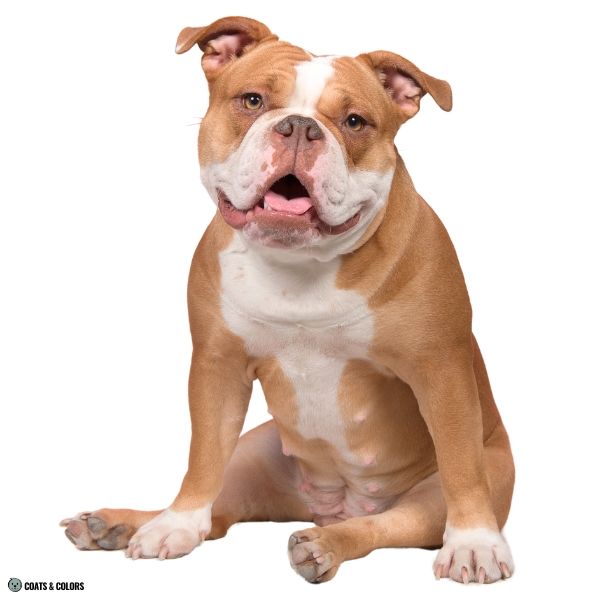
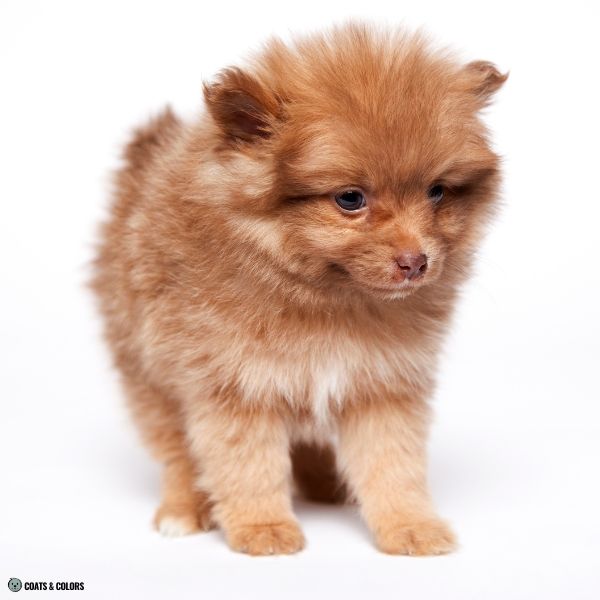

It’s the most common color in the Dogue de Bordeaux and can be found in breeds that allow many different color combinations, such as Pomeranian, Dachshund, Chihuahua, or Border Collie.
Brown sable is accepted but rare in some breeds like Rhodesian Ridgeback or Siberian Husky.
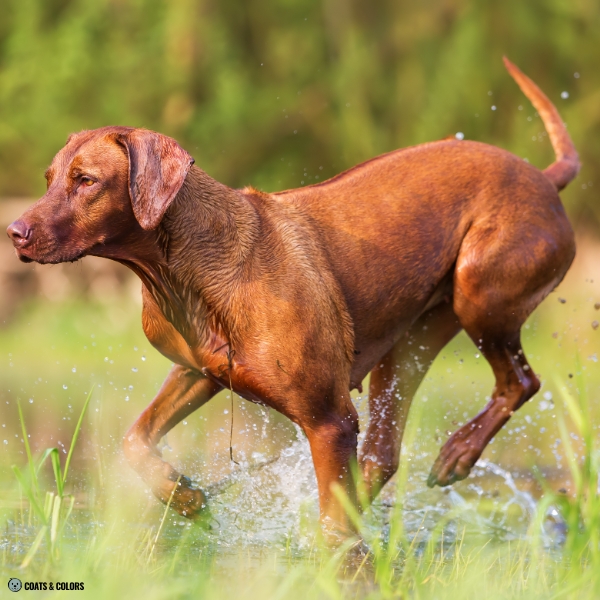

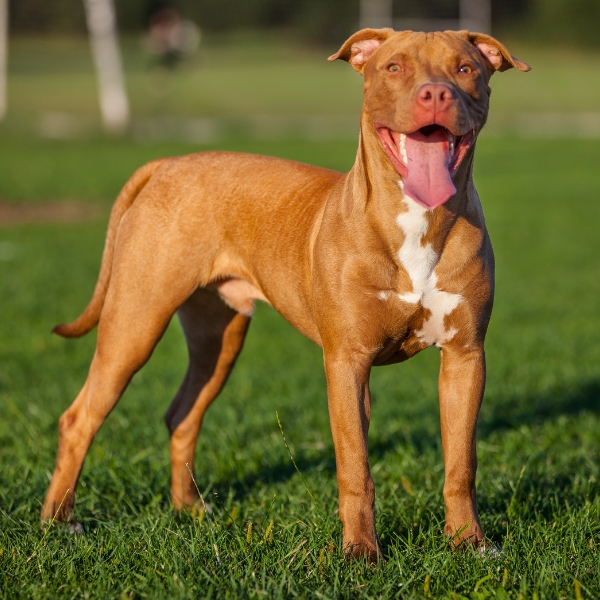
Brown sable can also happen as a mismark since brown eumelanin is a recessive trait. The variant that modifies eumelanin from black to brown (b) is, after all, a recessive trait.
The recessive b variant occurs at low frequencies in many traditionally black-based dog breeds[1]. But it will be hidden in dogs that express a black-based phenotype but are brown carriers (B/b).
And of course, as is always the case, many color breeders introduced brown as a “rare color” into their breeding program on purpose. There are “chocolate fawn” Frenchies, Pugs, etc.

Some breeds like Boston Terrier or Brussels Griffon use “Dudley” to refer to any lighter-than-usual nose color. This can often refer to both e/e dogs as well as the odd chocolate-nosed sable puppy.
In German Shepherd Dogs, the breed term for an agouti pattern is “sable“. Meaning, a “brown sable GSD” is actually a dog with a brown-based agouti pattern!
A truly sable-patterned German Shepherd would be called “fawn” or “golden“. And traditionally, German Shepherds are not supposed to have liver pigment or real sable anyway.
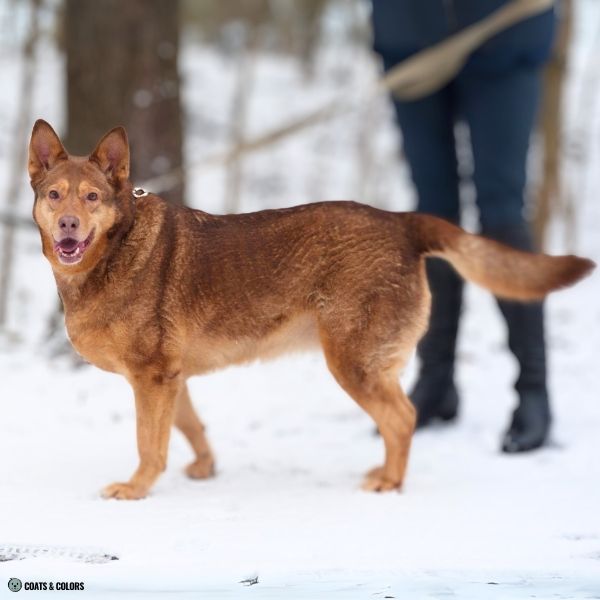
In English Cocker Spaniels, the breed term “sable” means KB domino on a tan point pattern (eH/- KB/- at/-). The so-called cocker sable is a strong version of domino unique to spaniel breeds.
The eH variant can turn what should be a solid brown dog into a brown sable-look-alike.
Brown-Based Sable Variations
Some other traits can affect how a brown sable pattern will look like.
- Brown sable dogs can have any coat type and texture. For example, they can be longhaired or shorthaired, furnished, wire-haired, or curly-coated.

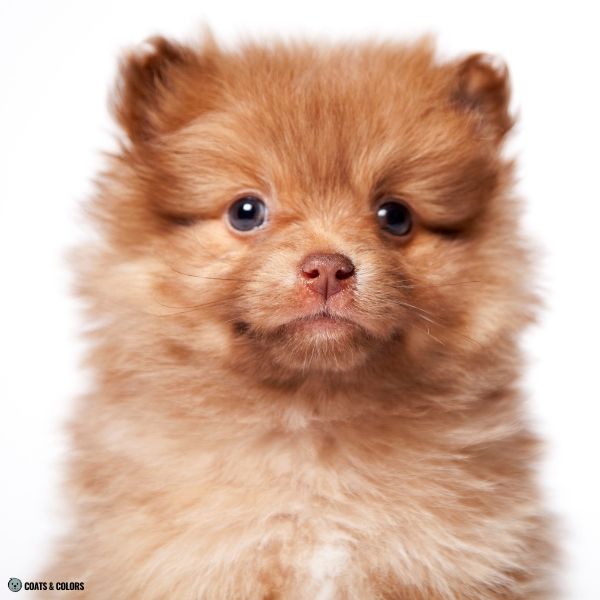
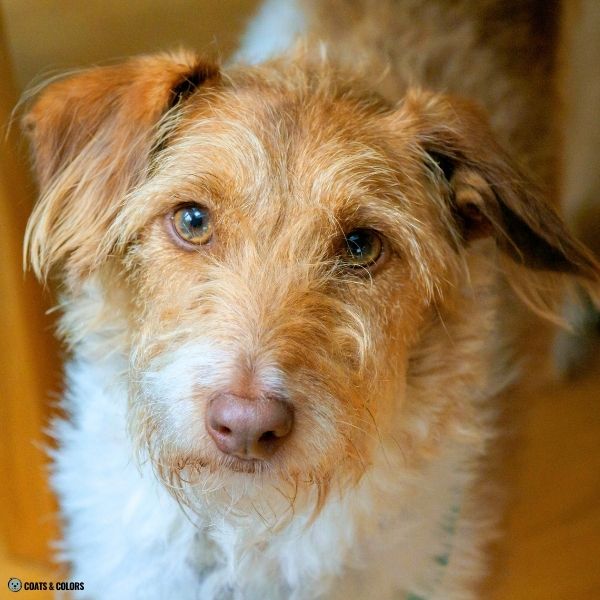
- Some countershading can lighten the phaeomelanin base color on the underbody.
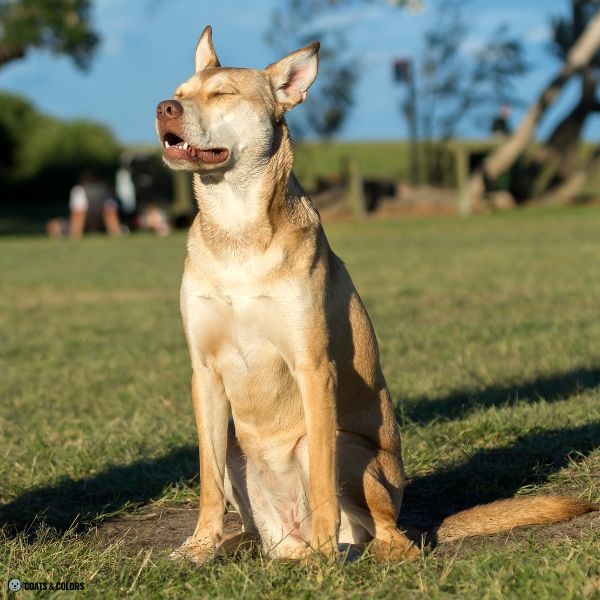
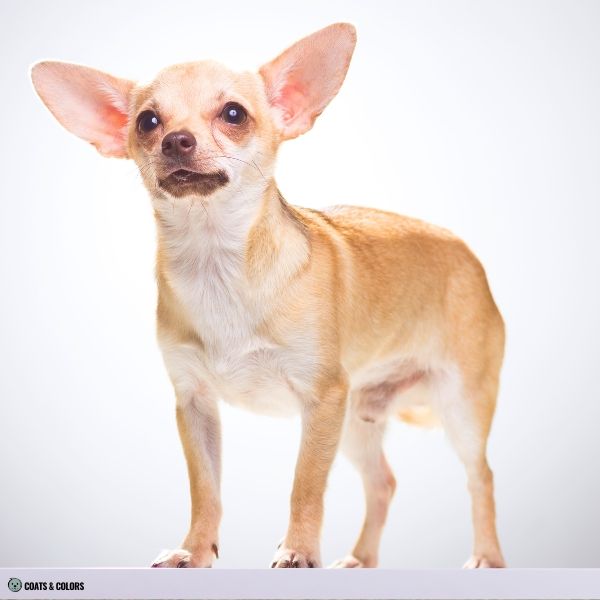
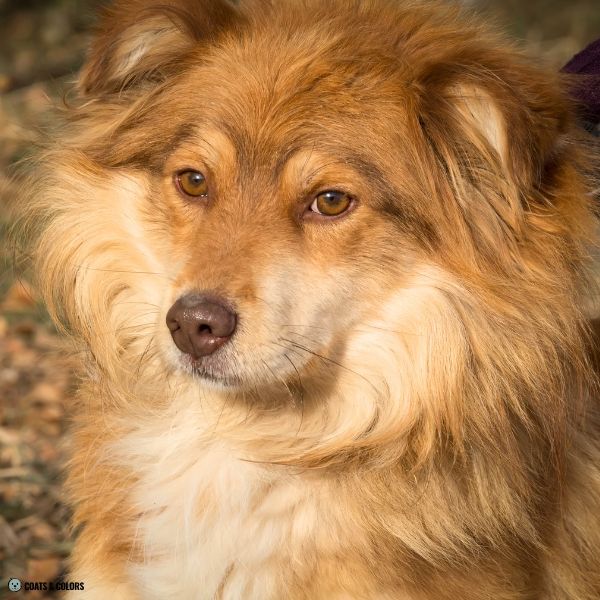
- White spotting can cover some or most of the chocolate sable pattern.
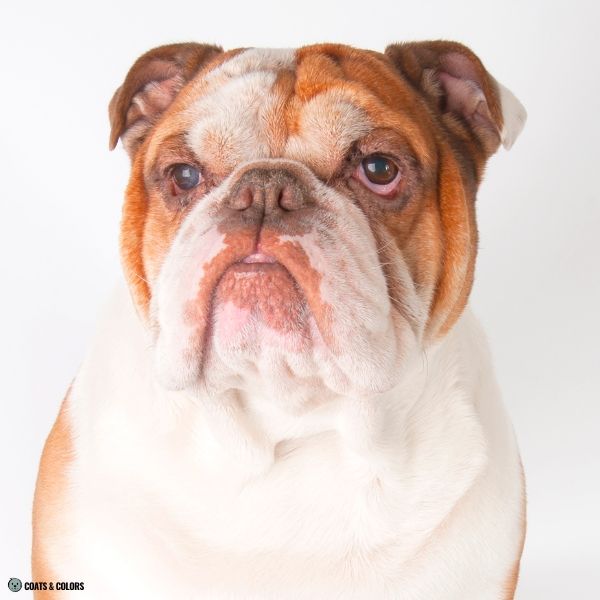
- Brown sable dogs with an Em variant can have a brown mask.
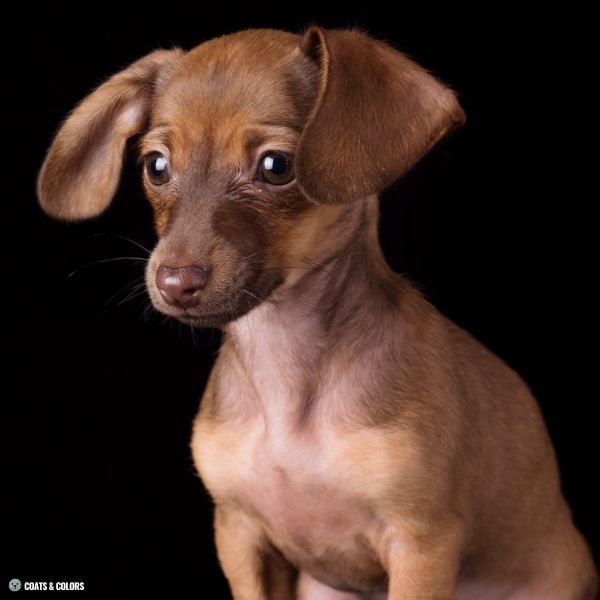
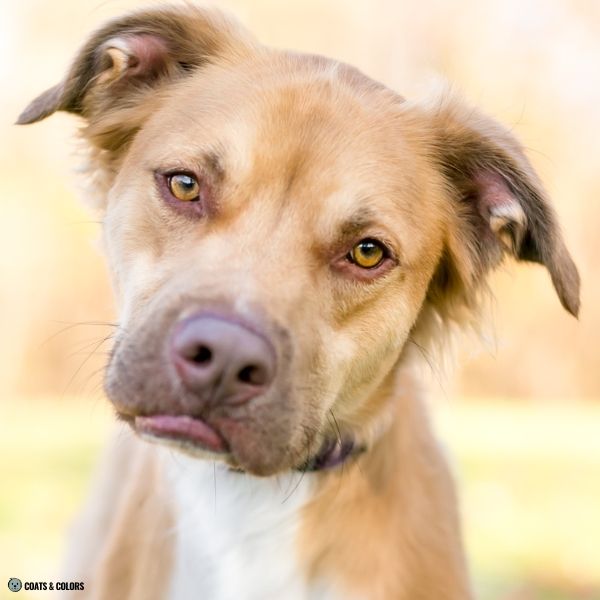
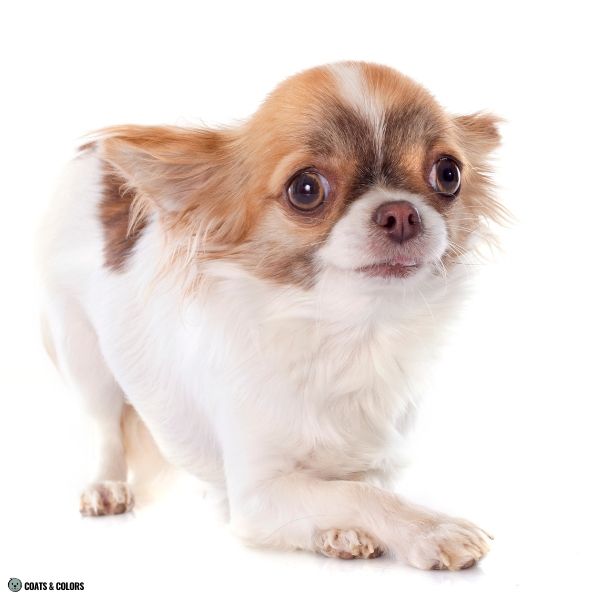
- Brindle on a chocolate sable dog will cause brown stripes on top of their sable pattern.
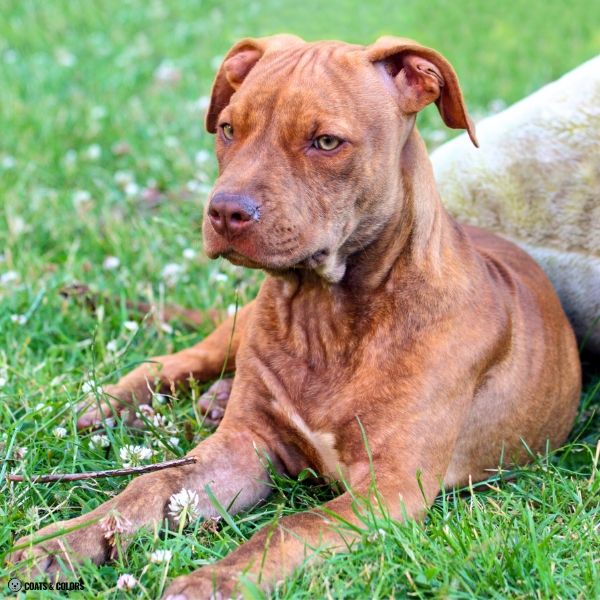
- Some dogs are chocolate sable merle. However, dogs need quite some eumelanin shading in their coat to express a visible merle phenotype. On a clear sable coat, their merle pattern might be hidden!
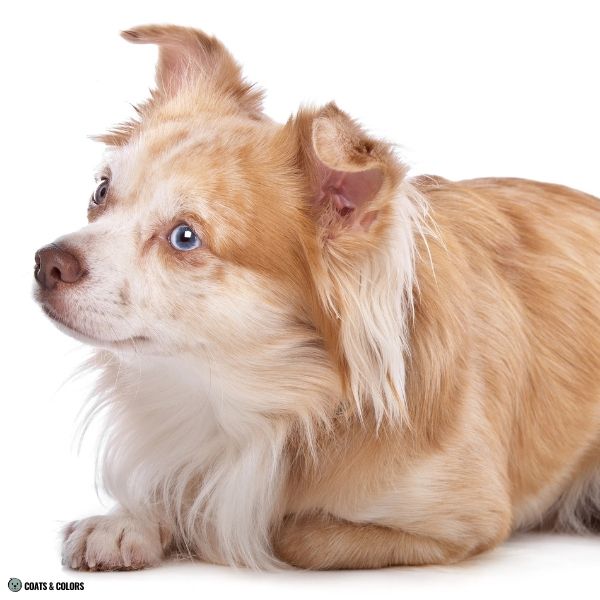
- Progressive graying can cause eumelanin fading in furnished dogs. This lightens the brown hair tips in a sable pattern to a lighter beige color, making them even less visible.
- Domino traits such as ancient domino can remove much of the brown overlay from a sable pattern. It gives white whiskers and may also lighten the phaeomelanin or give a lighter undercoat.
- Seal happens when a dominant black dog’s black is not as opaque as it should be. In some dogs, a hidden “ghost sable” bleeds through, producing shades of silvery yellow or red on a solid brown dog.
Sable Lookalikes
If you’re new to coat color genetics, you may have a hard time seeing the difference between a sable and an agouti pattern. And brown-based patterns don’t make it easier.
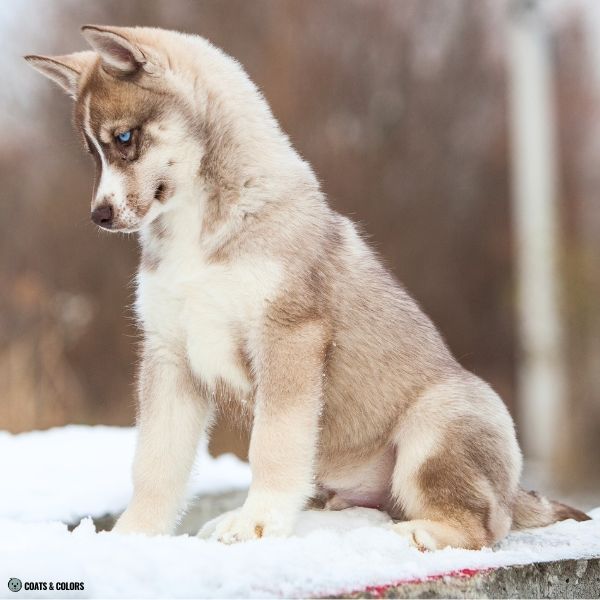
Next, brown-based creeping tan and some brown agouti domino as well as brown tan point domino patterns can give a widow’s peak and a mostly clear tan face. Domino also tends to lighten the phaeomelanin base color and give pale hair roots and undercoat.
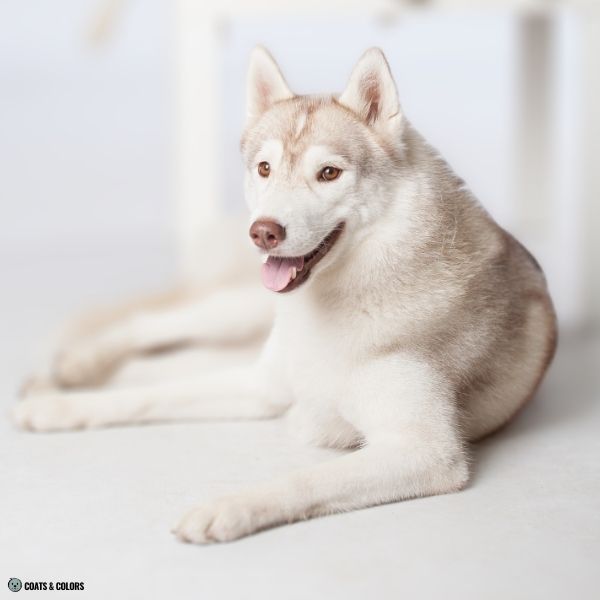
French Bulldogs have their own version of a brownish sable coat they call cocoa fawn. The cocoa mutation modifies black eumelanin to a darkish coffee brown color even in the absence of B locus brown.
Recessive red (e/e) can be hard to tell apart from clear sable. It does not help that recessive red dogs often have a pale nose that may look brownish even on a black sable dog.
Remember, recessive red causes white whiskers. But so can sable domino.
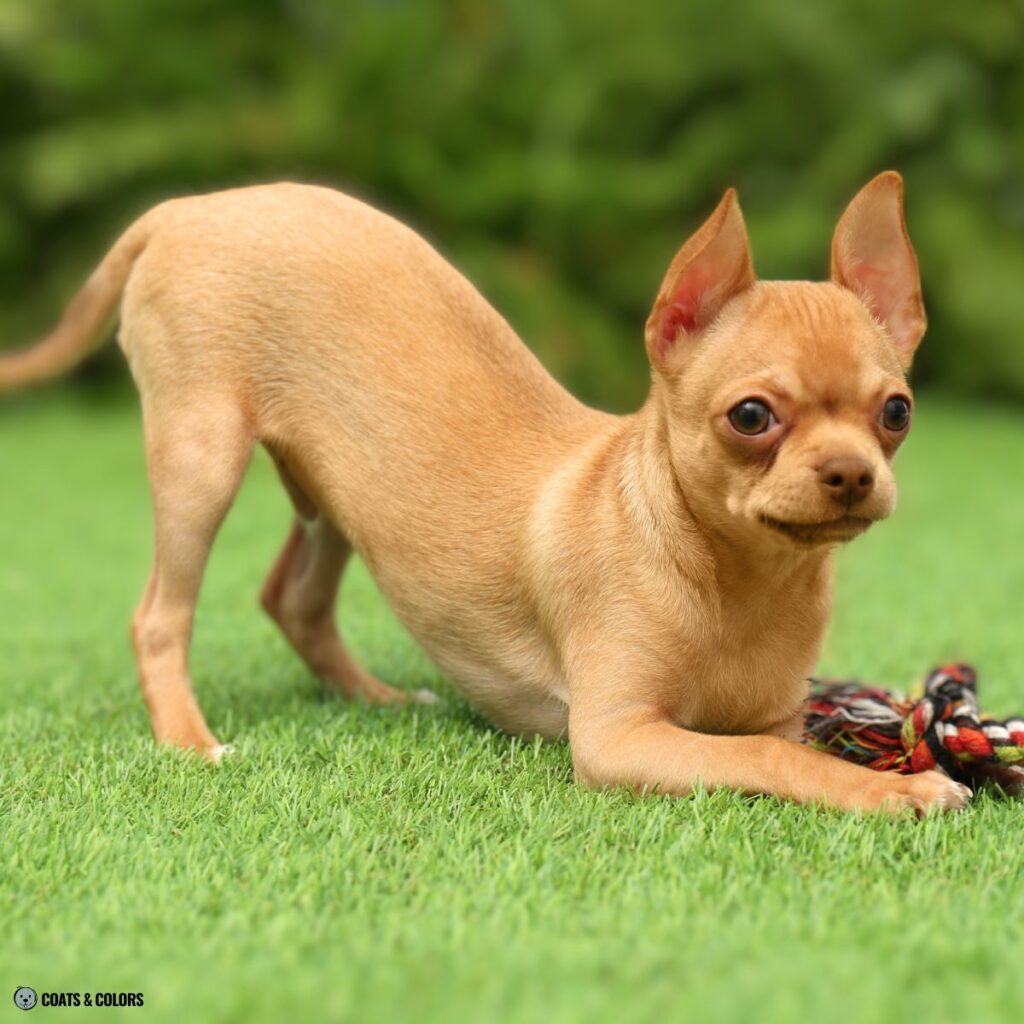
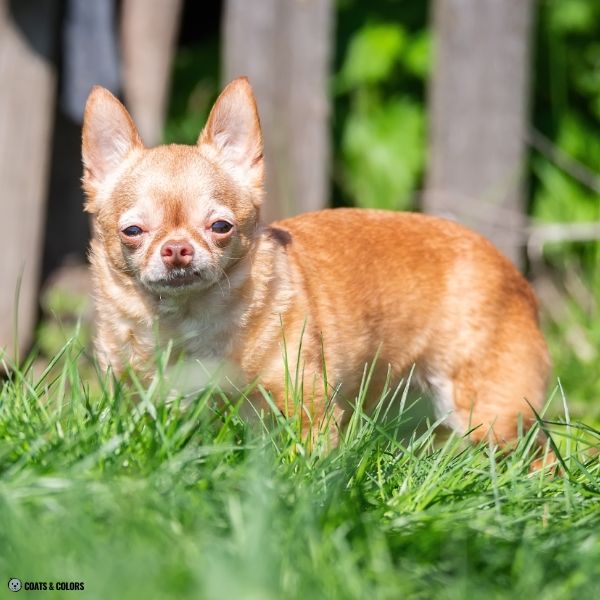
Brown-Based Sable Genetics
Pigment Distribution
The A locus, K locus and E locus are responsible for all basic pigment distribution patterns.
-
b/b
D/--
Ay/--
ky/ky-
Em/--
brown sable
mask
-
-
E/--
brown sable
-
-
eG/-
eA/--
brown sable
domino
-
-
-
-
A locus
First of all, dogs with a sable pattern have a sable variant (Ay) at their A locus.
K locus
Dogs who express a sable pattern always have two copies of the wild-type K locus (ky/ky). If they had even one copy of brindle (kbr/-), their sable pattern would have brown stripes on top.
E locus
The E locus genotype also has to make normal pattern expression possible. Brown-based sable dogs can have a brown mask (Em/-) or they can have a wild-type allele (E/-) as their dominant E locus allele. Some dogs that appear to be clear sable might actually be sable domino (eG/- or eA/-).
Pigment Colors
Brown-based sable dogs have brown eumelanin but they can have any shade of phaeomelanin.
Eumelanin
All of the eumelanin in a chocolate sable pattern will be non-diluted brown (b/b D/-).
Intensity
The shade of phaeomelanin can vary depending on red intensity.
The Sable Allele(s)
In the wild-type A locus, the agouti pattern, dogs have an overlay of banded hairs on their upper body. Hair banding happens when pigment cells alternate between eumelanin and phaeomelanin during hair growth. Agouti also gives visible darker face markings around the eyes and down the nose bar.
Sable is a mutant version of the wild type pattern with upregulated phaeomelanin banding. In a sable pattern, the hairs start with a dark hair tip which is then followed by one long band of just phaeomelanin. This turns the agouti hair banding into the sable hair tipping or “sabling“.
The gene variant responsible for a sable pattern is found at the A locus.
Legacy testing reports both clear and shaded sable as Ay.
Only new testing (UC Davis) distinguishes between two versions of sable.
Dogs can test as clear sable (Ay = ASIPDY) or shaded sable (Ays = ASIPSY).
ASIPDY > Ays
ASIPSY > aw
ASIPAG > asa
ASIPBS > at
ASIPBB > a
ASIPa
Each A locus allele represents a haplotype with a hair cycle promoter (HCP) and a ventral promoter (VP). And the hair cycle promoter HCP1 is unique to the sable pattern.
This HCP1 promoter stimulates phaeomelanin production in hair banding.
Additionally, intermediate phenotypes like in Ay/at or Ay/a dogs can also sometimes produce more eumelanin shading than expected. Which is hard to see on a brown-based pattern anyway.
Most sable-patterned dogs are born with lots of dark overlay in their puppy coat.
However, dogs with a clear sable pattern (Ay/Ay) are supposed to lose most of their puppy shading. In its adult coat, a very clear sable may even resemble recessive red (e/e)!
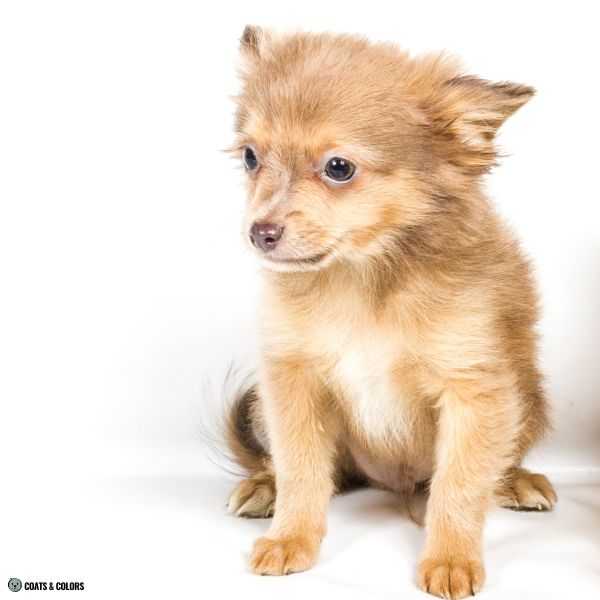
Some breeds can come in both brown-based clear sable and brown-based e/e red.
All standard-colored Duck Tolling Retrievers are supposed to be recessive red (b/b e/e ky/ky Ay/Ay). However, some are in fact brown sable (b/b E/- ky/ky Ay/Ay) which often goes unnoticed.
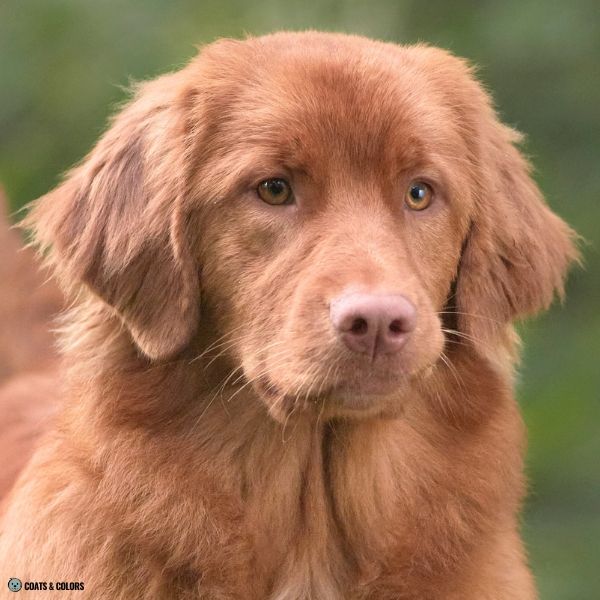
recessive red (white whiskers)
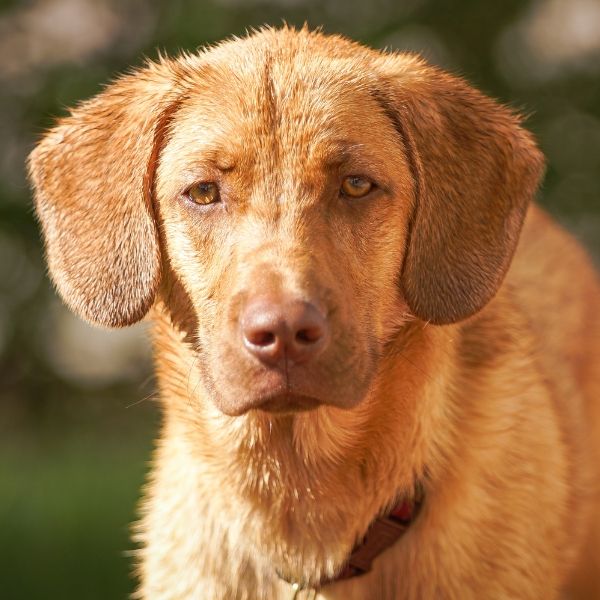
sable (brown whiskers)
Learn More
Links
[1] Dreger et al. (2019). True Colors: Commercially-acquired morphological genotypes reveal hidden allele variation among dog breeds, informing both trait ancestry and breed potential. PLoS ONE 14(10): e0223995. https://doi.org/10.1371/journal.pone.0223995
[2] American Kennel Club (AKC): Dog Breeds Overview.
[3] Fédération Cynologique Internationale (FCI): Dog Breeds Overview.
Image Credits
© dpcrestock/yayimages.com
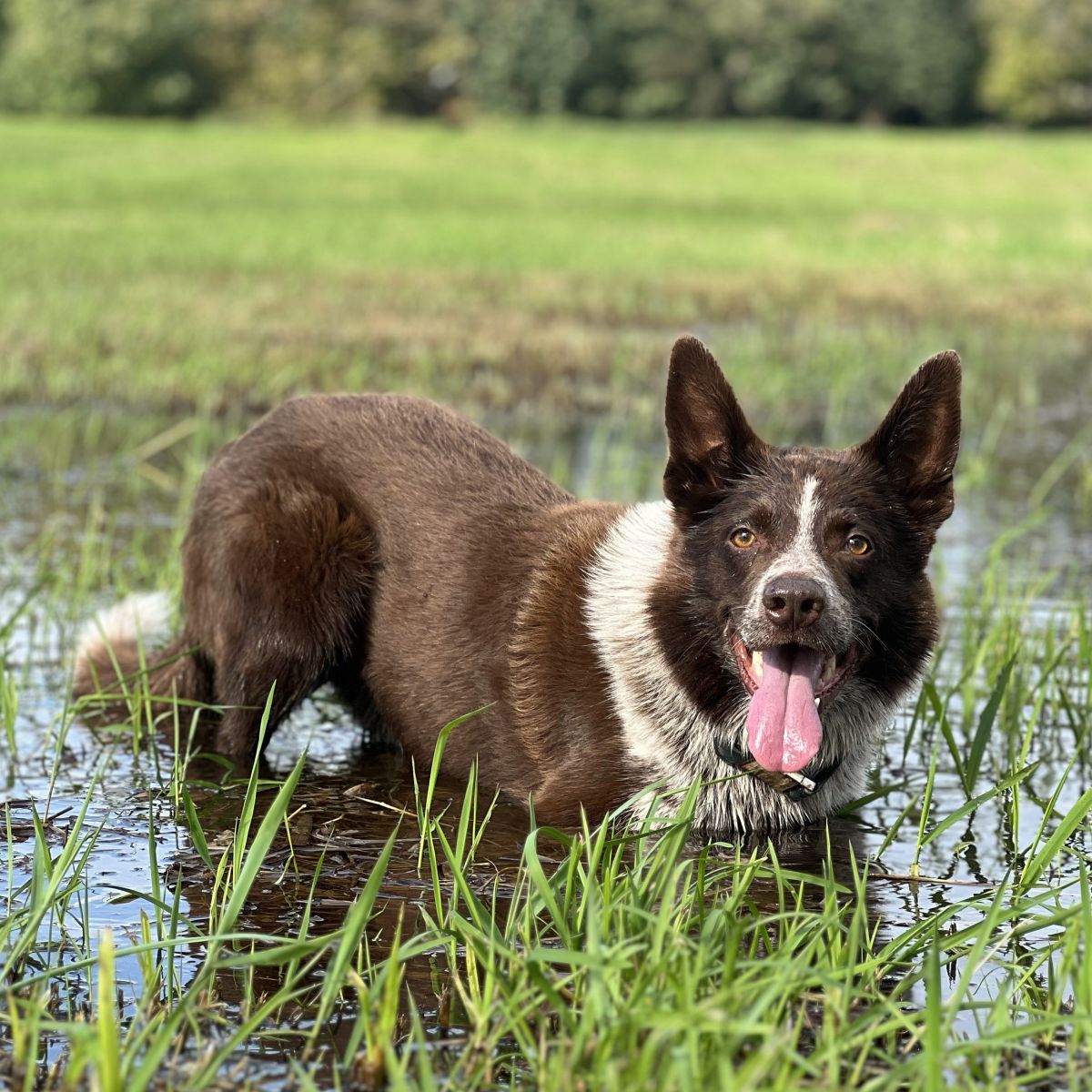
Hi! I’m Steffi. I am a biologist and a big time dog nerd. You are curious about coat color genetics? You’ve come to the right place! Read more.

